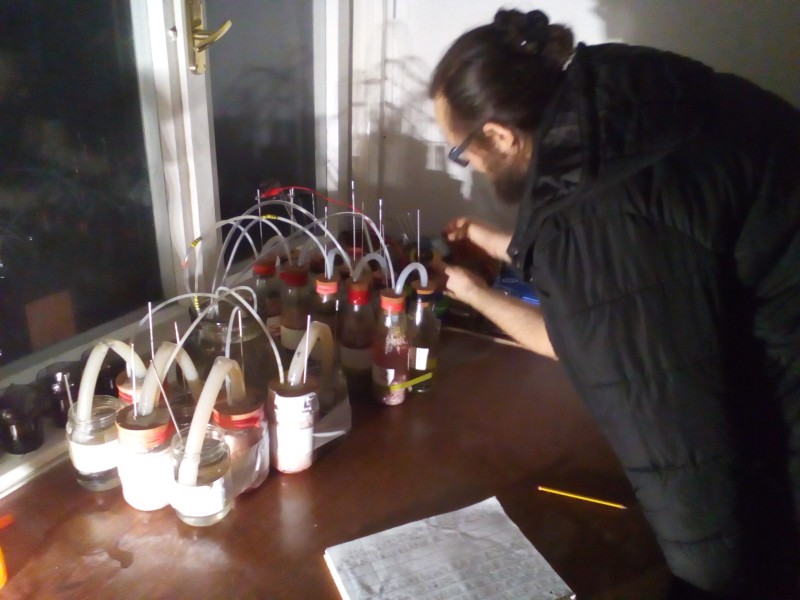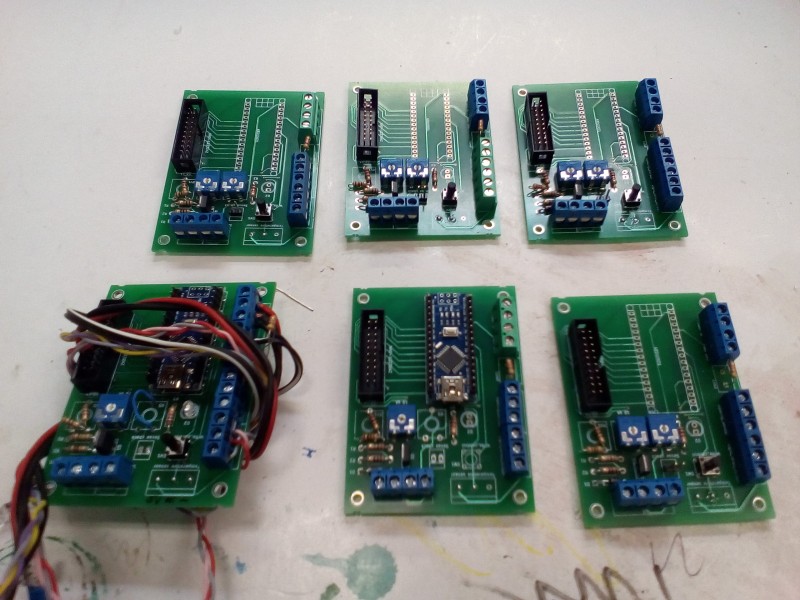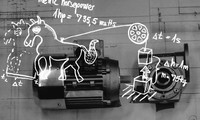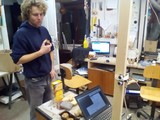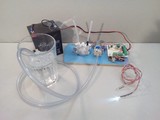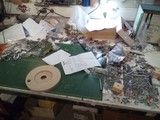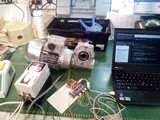Horse power
Category: Inventions
Collaborators: Zoran Srdić Janežič, Martin Podlogar
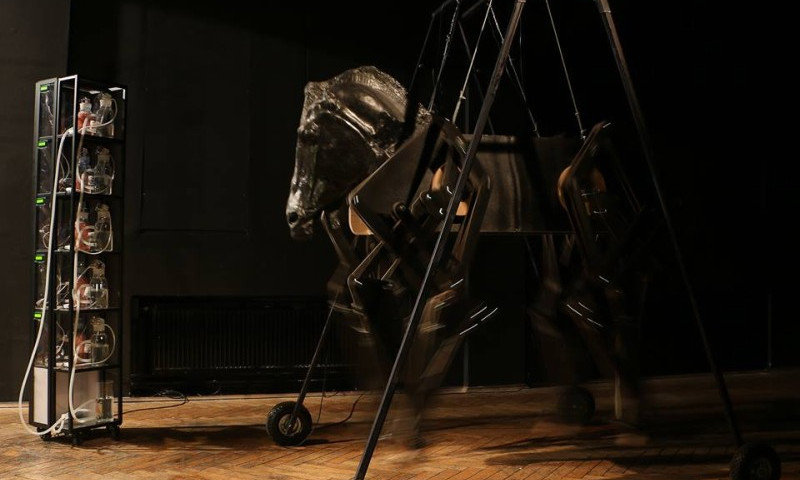
After success of the Pig robot, Zoran and I got invited for another robotic project by Kapelica gallery in Ljubljana. Continuing with the animal theme, we decided that the next robot should be a horse. Kapelica specializes in bio art, se this one was to have some biological component as well. We chose microbial fuel cells as such element. In the final piece, we had a life size horse moving its four legs based on movement and proximity sensors and signal from a microbial culture.
Zoran build horse’s mechanical parts. He got a lot of inspiration from Theo Jansen’s Strandbeest. Horse’s legs were constructed with mechanical linkage that allowed for stepping both directions on flat ground. Head was molded and cast on head of discarded horse statue.
Obviously, to perform any kind of robotic movement at all, the horse needed senses. For safety reasons, we decided to give it eyes on both front and back. On both sides there was a single passive infrared sensor and an array of three ultrasonic distance sensors. The infrared sensor was for detecting people, so that the horse could get interested in them. On the other hand, the distance sensors were there to notify the horse when it was getting dangerously close to something, so it could avoid running over anything or getting stuck.
Motive power for the horse was provided with a single three phase motor. For simplicity, the motor was mechanically linked to all four legs. This meant could only walk forward or backwards, the direction and speed of motion being set with a variable frequency drive. This decision meant that we retreated a little bit from the initially envisioned quadropod robotic movement. Instead, the piece became more like a moving sculpture. This decision was motivated by the limited time available and assessment of complexity of the project.
I go the idea to give the horse a sense of touch as well, so that it could respond to petting. For this, the horse was coated with carbon fibre and the fibre was hooked to act as a capacitive touch sensor. Unfortunately, this system performed great in the workbench but failed in the field. The skin got completely confused when the motor was started, sending seemingly random signals. I suppose this had something to do with the electrical noise from the motor. Unfortunately we did not have time to research this problem properly, let alone developing a fix for it. Thus the horse was left with very impressive looking shiny black skin, but no sense of touch.
The above mentioned steps took care of muscles and senses in our mission of simulating life. The brain was still missing. We decided to separate logic and emotions. Logical decision making was programmed into the microcontroller that was at the heart of all electronics. It got input from senses and had a limited recollection of past events. Basically, the horse could try to avoid objects or try to reach people if he considered them interesting.
Zoran researched the microbial fuel cell technology and developed the unique cell we were to use. Distinctively, the source of nutrition was horse meat, the idea being that the horse fed on itself. In the grand original plans the fuel cells were supposed to power the horse’s movement. Such delusions were dropped very quickly and the fuel cell was only connected as a signal source.
As the microbes were the living component of the creature we were creating, we assigned the role of emotions to them. The activity in the cell, measured from the voltage it generated, was interpreted as the horse’s emotions. The emotion also played a role in these decisions, affecting the frequency and power of its activities.
Regarding fuel cells, Zoran designed the needed custom glassware and got a glassblower make it. Zoran also designed and built the required electrodes himself.
To find out how the bacteria were doing, I built a monitoring array. The electrical characteristics of produced voltage and current were measured, together with ambient light level, solution opacity and temperature. Some of these measurements were actually biotechnologically motivated, while others were chosen simply because they were easy and cheap to implement. In addition to measurements, some active components were included, too. An air pump was added to oxygenate the water in fuel cell’s anode chamber, oxygen being necessary for sinking electrons released by the bacteria in cathode chamber.
In the end, this bewildering mess of ideas connected to togethed in the following way: There was a black life size horse capable of making step movements. Due to lack of stability, it was suspended on air. It sensed motion and objects on its front and back and exercised its legs based on what it sensed. Next to the horse, there was a high shelf filled with weird looking bottles filled with minced horse meat, tinted deep blue by the mediator chemical. Air was constantly bubbling through the anode side of fuel cells, and various readings from the cultures were visible in little yellow screens. A wire hung from the ceiling, connecting the horse and the shelf, passing bacteria’s conditions to horse, who took them as his emotions.
During the process detailed notes were taken and published in Horse power blog. Source code and hardware design is available in GitHub, in separate repositories for horse and bacteria holiday home automation. There is still a third wiki-only GitHub repository called horse-power for general technical documentation.
Multiple people were involved with this project. The complete list is available in the Zavod Gulag site of the project.
After the initial show in Kapelica, the horse was featured in Ljubljana Mini Maker Faire workshop Hekanje robota in March 2017. Zoran has continued with the themes laid out in this project, with his Brain Power, still work in progress as of 2017-06-01.


